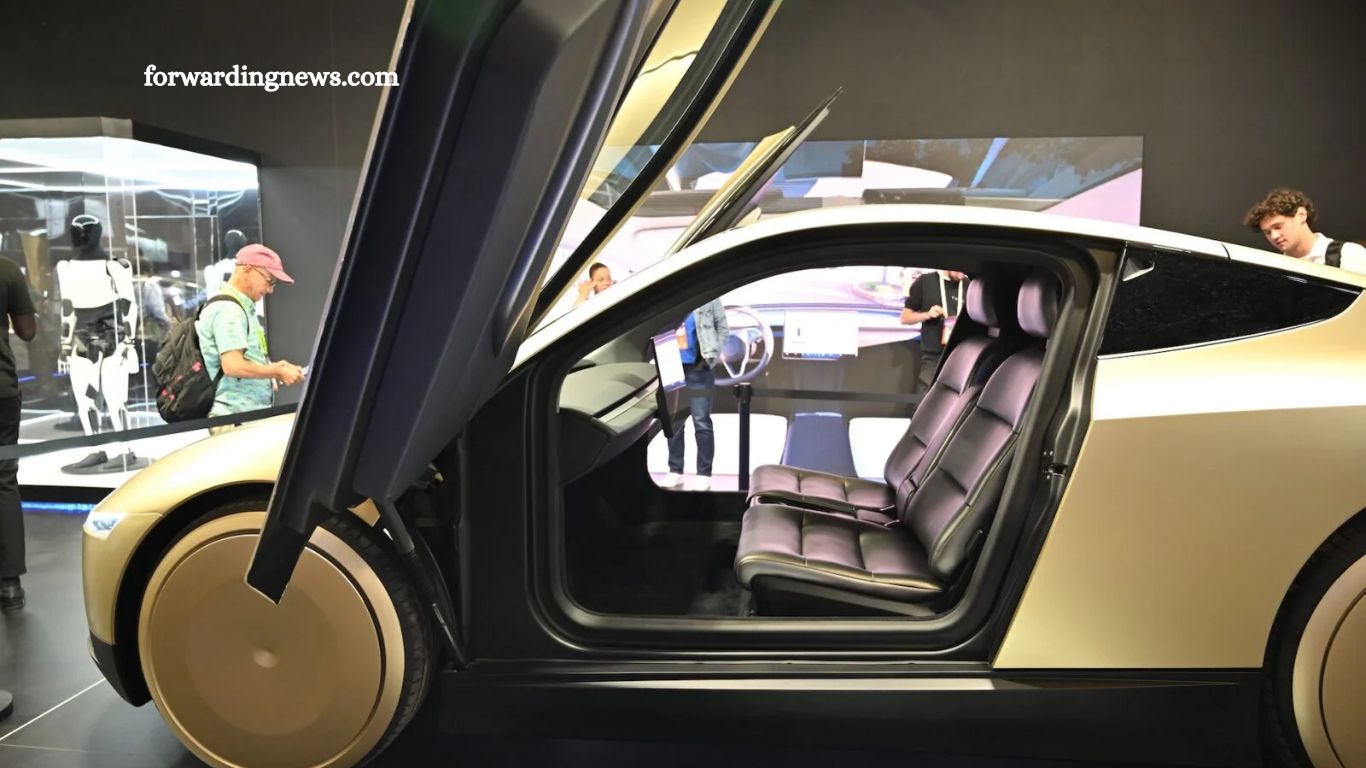Tesla has delivered a spectacular win on Wall Street following the much-anticipated launch of its robotaxi service. The company’s shares surged over 10% during Monday’s trading session, adding an impressive $104 billion to Tesla’s market capitalization and pushing its valuation to $1.14 trillion. This milestone reflects both investor enthusiasm and confidence in Tesla’s autonomous driving ambitions.
Read More: Breaking Free: How to Get Out of Bed When Depression Holds You Back
The Austin Launch: A Limited but Impactful Debut
Tesla’s robotaxi service made its debut over the weekend in Austin, Texas. A modest fleet of around a dozen Model Y SUVs began operating within a geofenced area, marking the company’s first step toward fully autonomous ride-hailing. For investors, the focus wasn’t just on the vehicles but on the underlying technology—Tesla’s camera-based Full Self-Driving (FSD) system. This approach stands in contrast to competitors like Waymo, which use expensive sensor arrays including LiDAR and radar.
Early Impressions from Influencers and Analysts
Tesla invited several influencers and enthusiasts to experience the robotaxi rides firsthand, and the feedback was overwhelmingly positive.
Sawyer Merritt, a Tesla investor and early rider, shared his excitement on social media:
“Screw it, I’m going to extend my stay in Austin another day. I want to take some more Tesla Robotaxi rides.” When asked whether he preferred the experience to traditional ride-hailing services, his answer was clear: “Robotaxi.”
Similarly, Wedbush analyst Dan Ives, a long-time Tesla bull, praised the system’s capabilities. During his ride, the robotaxi skillfully navigated narrow roads, parked cars, oncoming traffic, and pedestrians with patience and safety. Ives called the event the beginning of a “$1 trillion autonomous journey,” stating Tesla “exceeded” expectations and “lit the spark for autonomous driving.”
Elon Musk’s Vision: A Trillion-Dollar Autonomous Future
Elon Musk’s promise of an autonomous fleet has captivated investors for years. Musk envisions robotaxis eventually adding $5 trillion to $10 trillion to Tesla’s market value. Cathie Wood of ARK Invest shares this bullish outlook, forecasting that robotaxis could generate up to 90% of Tesla’s profits by 2029.
Facing the Competition and Regulatory Challenge
Despite the excitement, Tesla enters a competitive and regulated landscape. Waymo, Google’s self-driving arm, is already operating a larger autonomous fleet in cities including Austin, Phoenix, San Francisco, and Los Angeles. Amazon-backed Zoox is active in Las Vegas and San Francisco. These established players cast doubt on whether Musk’s aggressive projections will materialize.
Moreover, recent legislation in Texas requires companies to obtain state permits for operating self-driving vehicles, adding another layer of regulatory scrutiny. This new law, effective September 1, highlights the hurdles Tesla must overcome to expand its robotaxi service beyond Austin.
Can Tesla Deliver on the Robotaxi Revolution?
Tesla’s Austin launch was a masterstroke that energized investors and sent the stock soaring. However, the critical question remains: can Tesla’s camera-centric FSD technology outpace well-established competitors and navigate regulatory challenges? The coming months and years will be crucial in determining if Tesla can truly lead the autonomous future and justify the staggering market valuations investors have placed on its robotaxi vision.
Frequently Asked Questions
What caused Tesla’s stock to surge by over 10%?
Tesla’s stock jumped after the limited launch of its long-promised robotaxi service in Austin, Texas, which reignited investor excitement about the company’s autonomous driving future. The launch added $104 billion to its market cap.
Where did Tesla launch its robotaxi service?
Tesla debuted its robotaxi service in Austin, Texas, with a small fleet of Model Y vehicles operating within a geofenced zone.
How is Tesla’s Full Self-Driving (FSD) system different from competitors?
Tesla relies on a camera-only approach for its Full Self-Driving system, avoiding the use of LiDAR or radar. In contrast, companies like Waymo and Zoox use more expensive sensor stacks including LiDAR and radar for perception.
Who were the first riders of Tesla’s robotaxi service?
Tesla invited influencers, investors, and analysts—like Sawyer Merritt and Wedbush’s Dan Ives—to be among the first to experience its robotaxi rides. Reviews were largely enthusiastic.
What is Elon Musk’s long-term vision for Tesla robotaxis?
Musk envisions a massive future for Tesla’s robotaxi fleet, predicting it could boost the company’s value by $5 trillion to $10 trillion and become Tesla’s dominant source of profit.
Is Tesla ahead in the autonomous vehicle race?
Tesla is gaining momentum, but it faces stiff competition from Waymo, Zoox, and other players that already operate robotaxi services in multiple U.S. cities. Waymo in particular is seen as a current market leader.
Conclusion
Tesla’s robotaxi debut in Austin has ignited a fresh wave of investor optimism, adding over $100 billion to its market value and pushing the company back into the trillion-dollar club. The launch showcased Tesla’s commitment to a camera-only autonomous strategy and marked a major step toward Elon Musk’s long-promised self-driving future.
But while the momentum is strong, Tesla now faces a critical test: proving that its Full Self-Driving system can scale safely, outperform entrenched competitors, and navigate tightening regulatory environments. The road ahead may be complex, but for now, Tesla has reignited the race toward a driverless future—and it’s leading the pack.Breaking Free: How to Get Out of Bed When Depression Holds You Back

